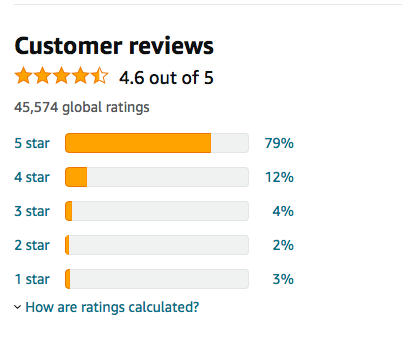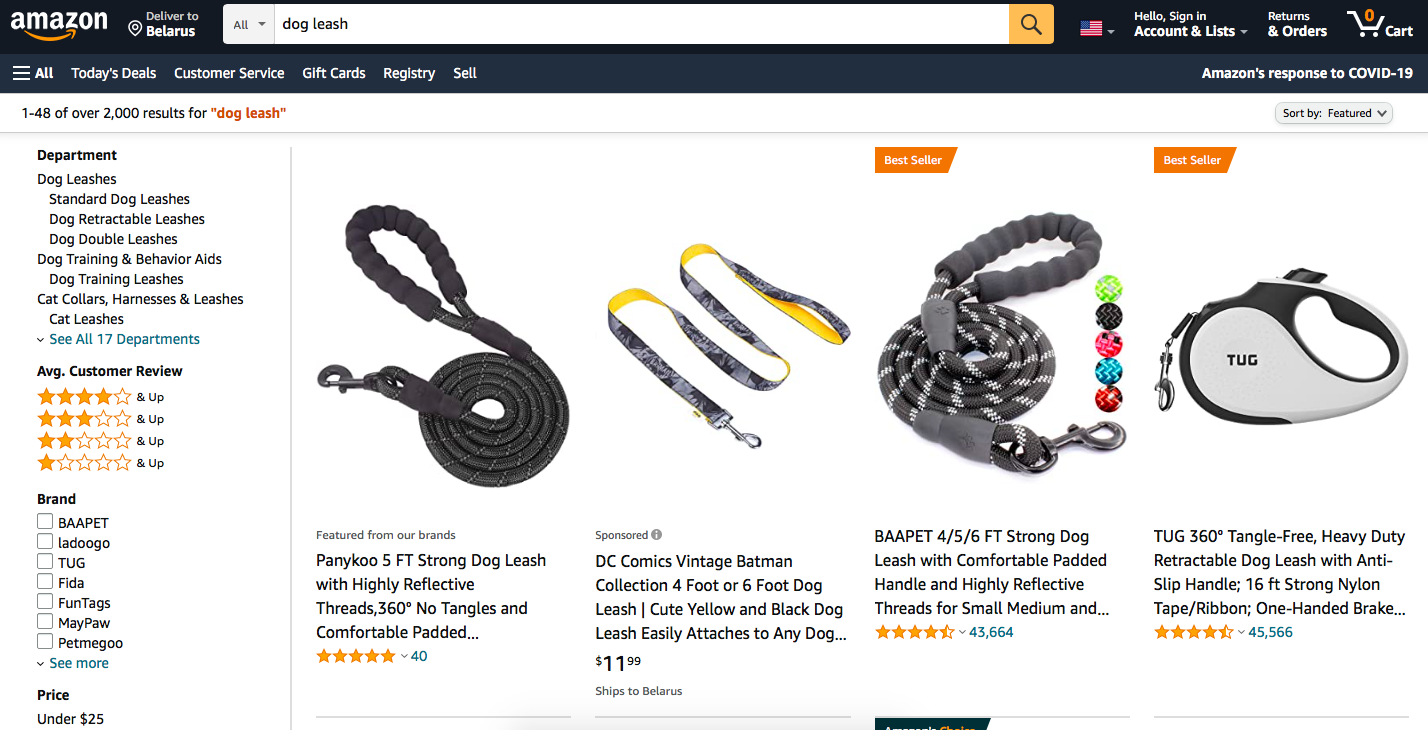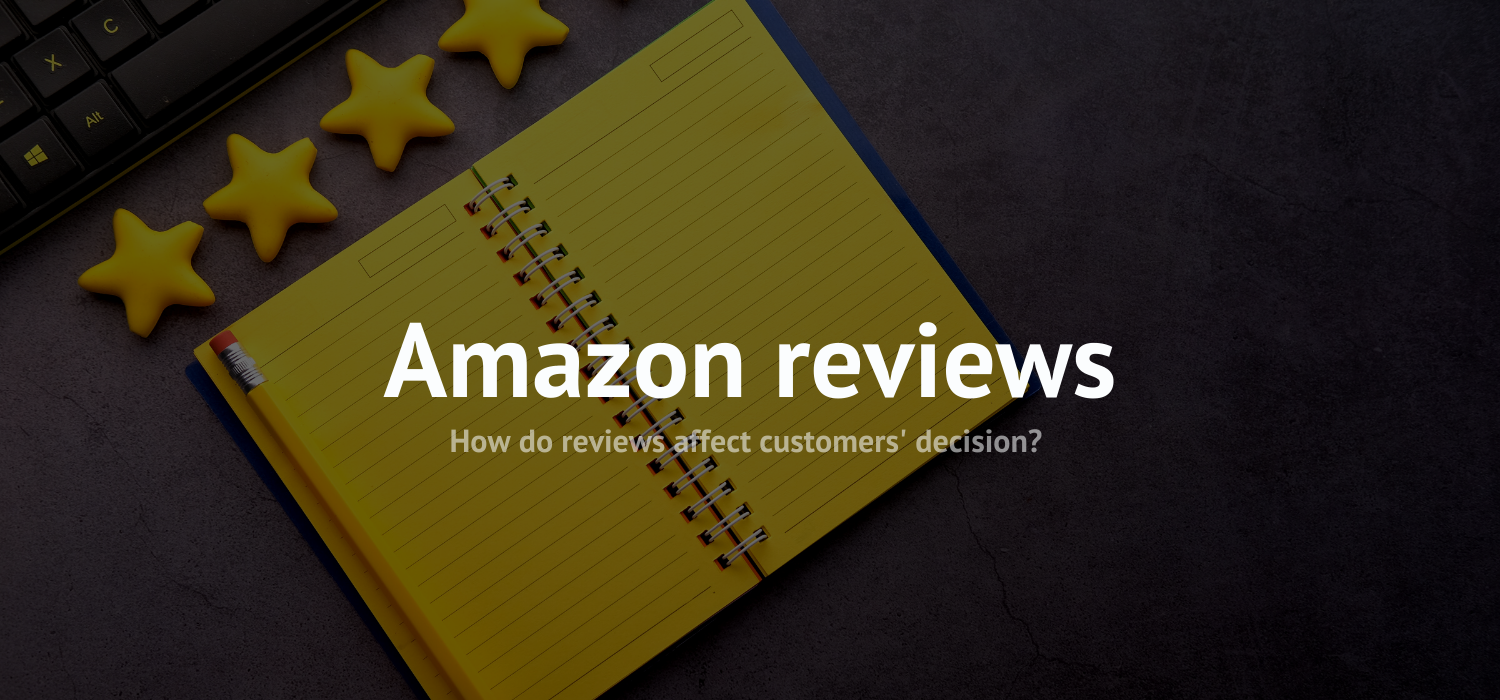As part of Medill Spiegel Research Center (SRC )’s ongoing, multi-faceted consumer engagement survey, they found out that reviews have a significant and quantifiable impact on purchasing decisions.
However, the extent of this impact depends on a number of factors, such as the number of stars on the review, the nature of the review content, the number of reviews, and the source of the review.
These findings are of great relevance to retailers and their suppliers.
Based on this research, Amaz.Markets has prepared a huge piece on the importance of getting reviews to increase sales conversions and improve your product’s visibility on Amazon.
Why are Amazon reviews so important? How do they affect your potential customers?
The more reviews a product has, the faster the conversion rate grows
It might seem intuitive that having reviews will increase the likelihood of a consumer buying a product. But the magnitude of this impact may surprise many people.
Based on data from a high-end gift retailer, the likelihood of buying a product with five reviews is 270% higher than the likelihood of buying a product that has no reviews at all. But after a certain point, having more reviews doesn’t always mean good. The marginal value of additional reviews begins to diminish after the first five reviews for your product.
Reviews have a greater impact on the likelihood of buying more expensive items than cheaper ones
To better understand the impact of reviews on conversions in different circumstances, SRC studied the impact of displaying reviews on more expensive and cheaper products. They found out that reviews have a greater impact on the likelihood of buying more expensive items than cheaper ones.
The higher the price, the higher the risk of a consumer making a decision. Getting more information through reviews helps mitigate this risk.
The study found that displaying reviews for a cheaper product increased conversion rates by 190%. However, for the more expensive product, the conversion rate increased by as much as 380%!
Across all product categories, purchase probability typically peaks at ratings in the 4.0-4.7 range.
Meanwhile, the likelihood of a buy then begins to decline as the ratings approach 5.0.
Reviews have a greater impact on the likelihood of buying high-engagement products
Aside from price, there are other factors that can cause a consumer to spend more energy evaluating a buying decision – and therefore relying more on reviews – include:
• How does the product affect health and safety?
• How much the product reflects the personality of the consumer
• Whether the product is a permanent purchase for the consumer.
Price is one of the main factors determining the “riskiness” of a purchase, but far from the only one.
Reviews from verified buyers are more positive than reviews from anonymous sources
SRC found out that verified buyers were more likely to give four- or five-star ratings than anonymous reviewers.
Verified customer reviews are also perceived by people as having a greater impact on their purchasing decisions! Photos and videos included in the review also have a very big impact.

Having more reviews from verified buyers can help add value to your reviews.
Do more stars mean more sales? Not at all!
SRC has proven that in all product categories, purchase probability typically peaks at ratings in the 4.0-4.7 range, and then begins to decline as the rating approaches 5.0 stars. In other words, people are less likely to buy products with an average rating in the 4.7-5.0 range than products in the 4.2-4.7 range.

This suggests that buyers find ratings at the far end of the spectrum “too good to be true.” Psychology and nothing more.
PowerReviews research found that 82% of shoppers specifically seek negative reviews. As you can imagine, readers are skeptical about overly positive reviews, and in many cases, negative reviews will generate more credibility for the product.
Focus on the first five reviews. Why?
Yes. You got it right. The first five product reviews have the biggest impact on conversions.
Focus on getting meaningful reviews – especially for more expensive goods.
Let’s summarize the interim results
Reviews on Amazon act as social proof for shoppers.
They greatly affect:
• visibility of your product in Amazon search;

• the click-through rate of your product listing (CTR) in the search results;
• the conversion rate of the listing as a whole (including Amazon ads).
How does Amazon fight fake reviews?
Fake reviews are a great pain for Amazon.
The company launched a fight against them back in mid-2016, and it continues up to this day.
For years, reviews were bought and sold, exchanged for discounts and free samples of goods. Then people began to create “black” schemes for “gluing” reviews and other manipulations of the site’s algorithms. The review trade has become another market adjacent to Amazon sales.
Since 2016, the company has already removed millions of reviews that came under suspicion of authenticity, more than 1,000 lawsuits have been filed against buyers suspected of rigging reviews.
Tens of thousands of buyers were temporarily deprived of the opportunity to leave reviews, and their previous reviews were removed in whole or in part.
The company also launched an online system that learned how to recognize the authenticity of reviews and triggered several more waves of review deletion.
How to get reviews for your Amazon product in 2021?
– Attach a memo asking the customer to review your product
Do you sell a box with socks? It’s cool! Put inside the box a memo to the client, thank him for the purchase and ask him to leave the review – voluntarily!
Just make sure you comply with Amazon customer reviews policies when you request a review. In no case should you offer a financial reward, discount, free product, or other compensation to a third party in exchange for a review!
– Be friendly to your customers
Some of the most memorable Amazon buying experiences are when the seller is very active in the customer interaction process.
The more you help your customers with support, the warmer they will feel towards you and the more accommodating they will be when you ask them for feedback.
A violation of Amazon’s customer reviews policy
Violations of the Amazon customer review policy include but are not limited to the following:
– The seller publishes a review for his or a competitor’s product
– The seller offers third-party financial rewards, discounts, free products, or other compensation in exchange for feedback on their or their competitor’s product – including using services that sell customer reviews, websites, or social media groups.
– The seller offers to provide a refund or refund after the buyer writes a review (including refunds using a payment method other than Amazon).
– The seller uses a third-party service that offers free or discounted items.
– A family member or employee of a seller posts a review about a seller’s product or a competitor’s product.
– The seller asks the reviewer to change or remove their review.
Amazon has a zero-tolerance policy for any kind of violation of customer reviews.
Conclusion
Our team did its best to share everything you should know about Amazon’s review policy. If you have any questions, we will be happy to answer them.
Wishing you great sales!
0

